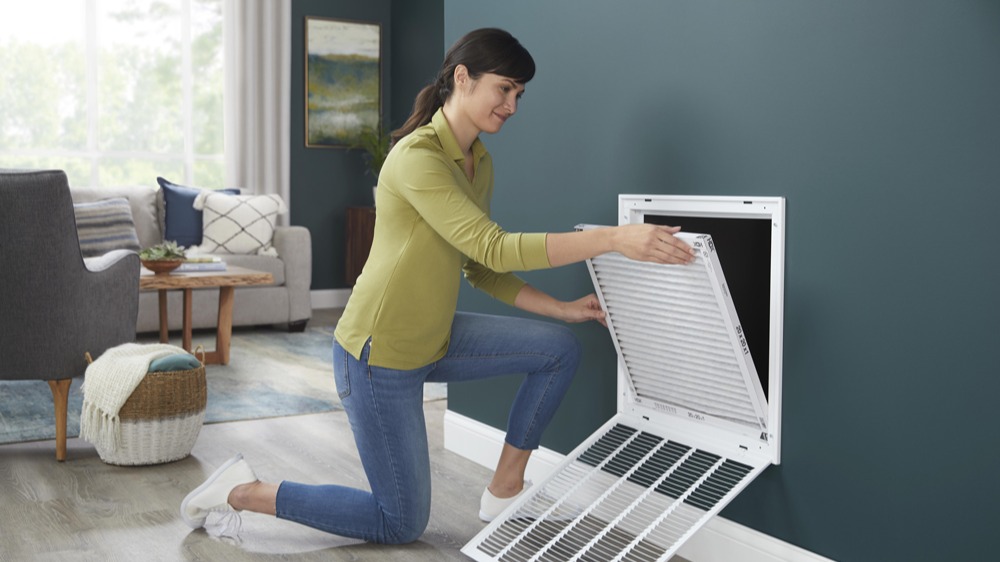Introduction to Air Filters
Keeping the air quality in your home high is essential for health and comfort. Air filters play a crucial role in trapping pollutants and allergens. Many homeowners overlook the importance of maintaining and regularly replacing air filters. Understanding how often should air filters be changed can significantly improve indoor air quality and HVAC efficiency.
Regular maintenance of air filters promotes a healthier living environment and helps reduce energy costs. Dirty or clogged filters force heating, ventilation, and air conditioning (HVAC) systems to work harder, consuming more energy and driving utility bills. Adhering to a regular maintenance schedule ensures that your HVAC system runs smoothly, keeps your air clean, and remains cost-effective.
Types of Air Filters
Air filters come in various types, each with its characteristics and uses. Choosing the right filter depends on the specific needs of your household. Here are some common types:
- Fiberglass Filters: These are inexpensive and commonly used but need frequent replacement as they capture only larger particles. They are often preferred for their low initial cost, while they may not be ideal for households with allergies or individuals needing advanced air cleaning.
- Pleated Filters: Crafted using either cotton or polyester, these filters boast an increased surface area and can capture tinier particles, making them more efficient than fiberglass filters. They are a more balanced choice for households looking to maintain good air quality without frequent changes.
- HEPA Filters: High-efficiency particulate Air (HEPA) filters can capture at least 99.97% of airborne particles, including pollen, dust, and smoke. Because of their strong ability to purify air, they are perfect for homes with people who have allergies or respiratory issues.
- Washable Filters: These filters are reusable and eco-friendly. While they can save money over time, they require regular cleaning to remain effective. Opting for washable filters can greatly reduce waste and expenses from frequently buying new filters.
Signs Your Air Filter Needs Replacement
How do you know when it’s time to change your air filter? Several indicators suggest it’s time for a replacement:
- Reduced Airflow: If you observe reduced airflow coming from your vents, it may be because of a blocked filter. Decreased air flow may impact the effectiveness of your HVAC system and challenge your home’s ability to reach the desired temperature.
- Increased Energy Bills: A sudden increase in energy expenses could mean that your HVAC system exerts more effort because of a clogged filter. Higher energy consumption impacts your wallet and increases your household’s environmental footprint.
- Visible Dirt: If the filter looks dirty and clogged with dust or debris, it’s time to change. A visibly dirty filter is a clear sign that it is no longer effectively trapping contaminants and needs to be replaced.
By staying attentive to these signs, you can ensure timely maintenance and avoid the negative impacts of a clogged air filter.
Step-by-Step Guide to Replacing Air Filters
Changing an air filter is a straightforward process that requires only a few minutes. Follow these steps to ensure proper replacement:
- Turn off your HVAC system: Before starting, ensure the system is turned off to prevent damage or injury. Turning off the system also helps prevent loose dust or debris from being blown into the air during replacement.
- Locate the filter compartment: Filters are commonly found in the return air vent or the HVAC unit. If you need more clarification, check your system’s manual. The location can vary based on the system design, so verifying the exact spot is essential before proceeding.
- Remove the old filter: Carefully slide out the old filter to avoid dispersing accumulated dust. Place the old filter in a plastic bag immediately to contain dust particles.
- Check the filter size and type: Ensure that the new filter matches the old one in size and type to guarantee correct fit and effectiveness. Using the wrong type or size of the filter can compromise the filter’s effectiveness and the system’s performance.
- Install the new filter: Insert the new filter in the correct orientation, usually indicated by an arrow showing the airflow direction. Proper installation ensures that the filter captures contaminants effectively while allowing optimal airflow.
- Turn the HVAC system back on. Once the new filter is in place, turn the system back on and enjoy improved air quality and performance. Monitoring the system for a few minutes is advisable to ensure everything is running smoothly.
Following these steps ensures your filter is replaced correctly and your home benefits from clean and efficient airflow.
Benefits of Regular Filter Maintenance
Maintaining your air filters regularly offers several benefits, including:
- Improved Air Quality: Clean filters trap more pollutants, allergens, and dust, leading to healthier indoor air. This is especially crucial for households with family members who have allergies or respiratory issues.
- Enhanced HVAC Efficiency: Clear filters improve airflow, lessening the burden on your HVAC system and enhancing performance. A high-performing HVAC system functions more effectively and uses less energy, lowering utility expenses.
- Prolonged System Lifespan: Routine filter upkeep can prolong the lifespan of your HVAC system by minimizing damage and deterioration. Keeping your system in good condition through simple maintenance actions like filter replacement can prevent costly repairs and replacements in the future.
Routine upkeep is a minor cost that has substantial long-term advantages, making it a crucial aspect of home maintenance.
